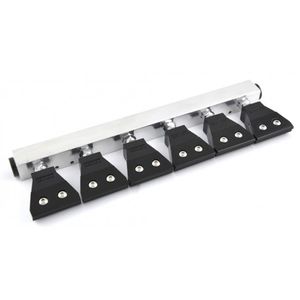The benefit of drier parts “post-process” is obvious: staining and corrosion potential are reduced while handling, inspection and subsequent processing are all improved. But there are other potential benefits to post-stamping processes as well:
- Less surface residue on parts yields a cleaner surface for welding. Particularly in welding operations where no intermediate surface cleaning is performed. This will result in potentially cleaner welds, less surface residue at weld seams and less fouling of welding tips and nozzles.

- Drier parts can reduce the chances of water, white and black stain of zinc-coated steel from causing paint defects. Obviously stained or corroded surfaces should be rejected or scrapped, but in cases where mild or negligible staining is present—these very slight surface imperfections sometimes “broadcast” or are “magnified” through e-coat and other finishing processes. By minimizing the opportunity for fluid remaining on part surfaces—you provide a better quality part for surface pretreatment and finishing.
- By reducing residues on parts, pooling of lubricant solution in hoppers and between parts, there is less chemical loading of pretreatment cleaning baths. This can translate to longer cleaner bath life, cleaner rinse stages. This may also translate to potentially less scale and sediment build-up in tank bottoms, in/on heat exchangers and pumps and in risers and nozzles.
- Less chemical on stamped part surfaces could also help reduce the temperature and pH requirements of pretreatment processes—yielding gains in BTU savings as well as increasing operator and environmental safety.
- Less contamination of cleaning stages makes wastewater treatment processes easier and more efficient.
- A drier part may not require secondary application of rust preventive additives or specialized storage containers. In some instances, one may be able to eliminate having to apply oil or solvent-based rust preventives or using vapor phase corrosion inhibitor (VPCI) shipping bags.
Consider also that many stamping processes utilize conveyor belts to deliver stamped parts to inspection and to shipping containers. Air knives can be integrated with these conveyors that are already part of the production process. The clean air used in air knife applications typically does not require heating – relieving concerns over handling and safety.
To learn more about IRMCO FLUIDS and our capabilities, visit us at www.irmco.com, at our VIMEO and YOUTUBE pages, or call us at 800-323-2933

